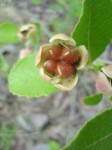Spermatophyta: Dicotyledonae: Archichlamydeae: Dilleniales
Flora of the DRC: Dilleniaceae
Flora of Mozambique: cultivated Dilleniaceae
Flora of Rwanda: Dilleniaceae
Flora of Zambia: Dilleniaceae
Flora of Zimbabwe: cultivated Dilleniaceae
BHL (Biodiversity Heritage Library): Dilleniaceae
EOL (Encyclopedia of Life): Dilleniaceae
GBIF (Global Biodiversity Information Facility): Dilleniaceae
Google: Web - Images - Scholar
iNaturalist: Dilleniaceae
IPNI (International Plant Names Index): Dilleniaceae
JSTOR Plant Science: Dilleniaceae
Mansfeld World Database of Agricultural and Horticultural Crops: Dilleniaceae
Wikipedia: Dilleniaceae
Plants of the World Online: Dilleniaceae
Tropicos: Dilleniaceae
Dilleniaceae
Wild, H. (1960) Dilleniaceae Flora Zambesiaca 1(1)
Description of the family
Links to genera: View: living plant images - herbarium specimen images - all images for this family
| Genus | Content |
| Tetracera L. | Description, Image |
Other sources of information about Dilleniaceae:
Our websites:
Flora of Burundi: DilleniaceaeFlora of the DRC: Dilleniaceae
Flora of Mozambique: cultivated Dilleniaceae
Flora of Rwanda: Dilleniaceae
Flora of Zambia: Dilleniaceae
Flora of Zimbabwe: cultivated Dilleniaceae
External websites:
African Plants: A Photo Guide (Senckenberg): DilleniaceaeBHL (Biodiversity Heritage Library): Dilleniaceae
EOL (Encyclopedia of Life): Dilleniaceae
GBIF (Global Biodiversity Information Facility): Dilleniaceae
Google: Web - Images - Scholar
iNaturalist: Dilleniaceae
IPNI (International Plant Names Index): Dilleniaceae
JSTOR Plant Science: Dilleniaceae
Mansfeld World Database of Agricultural and Horticultural Crops: Dilleniaceae
Wikipedia: Dilleniaceae
Plants of the World Online: Dilleniaceae
Tropicos: Dilleniaceae
